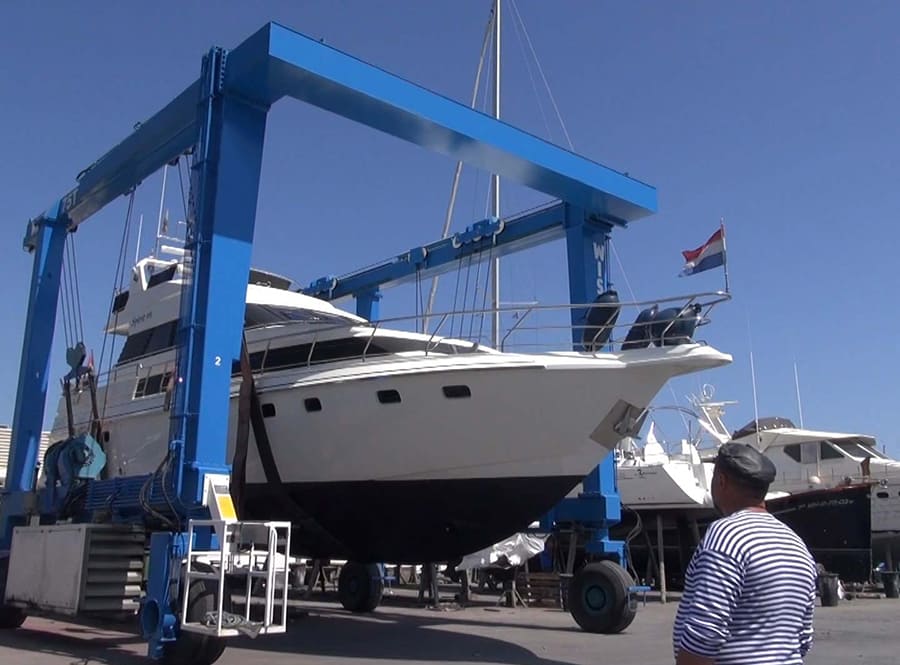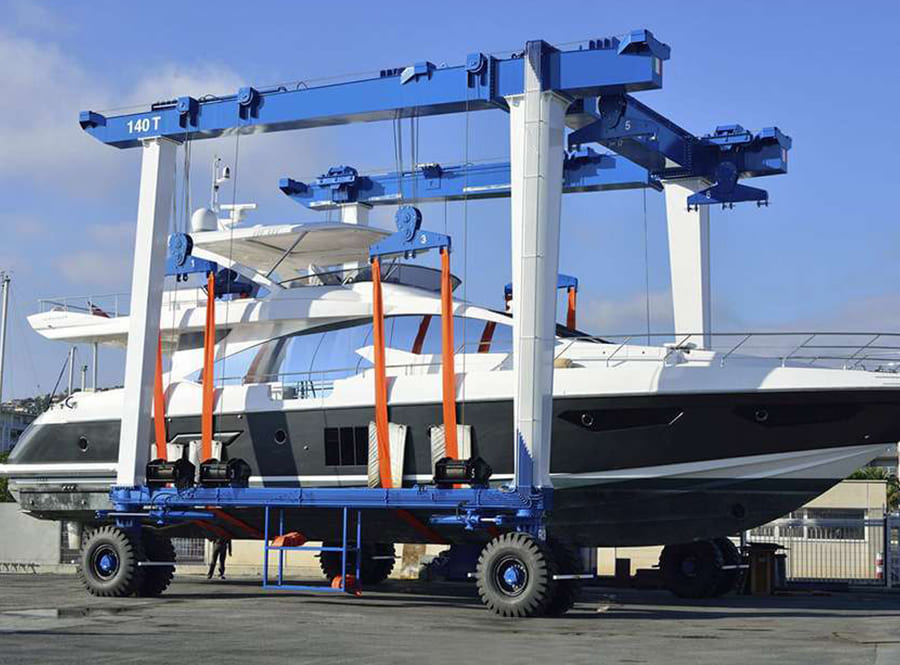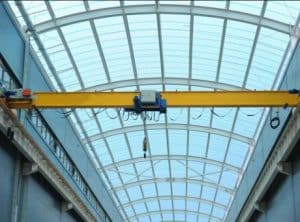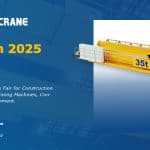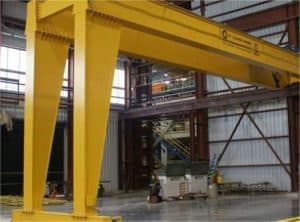Ship building gantry crane are the main equipment for manufacturing ships. Currently, crane trolleys generally use rimless wheels and are designed with a guide device (horizontal wheel) added to one side of the track. This structural form reduces the manufacturing deviation and the impact of track gauge changes on the trolley operation under trolley load conditions. Rolling friction replaces sliding friction between the horizontal wheel and the side of the track, and the frictional resistance endured by the operating mechanism is greatly reduced.
However, in the actual operation process, the phenomenon of the car deviating from the track often occurs. That is, when the car is running back and forth, the center of the wheel seriously deviates from the center of the track, causing the horizontal wheel to squeeze the side of the track, increasing the friction between the two. This causes abnormal wear of the horizontal wheels and tracks, especially when the trolley travels at a full speed of 70 m/min, posing a major safety hazard to the trolley’s operation.
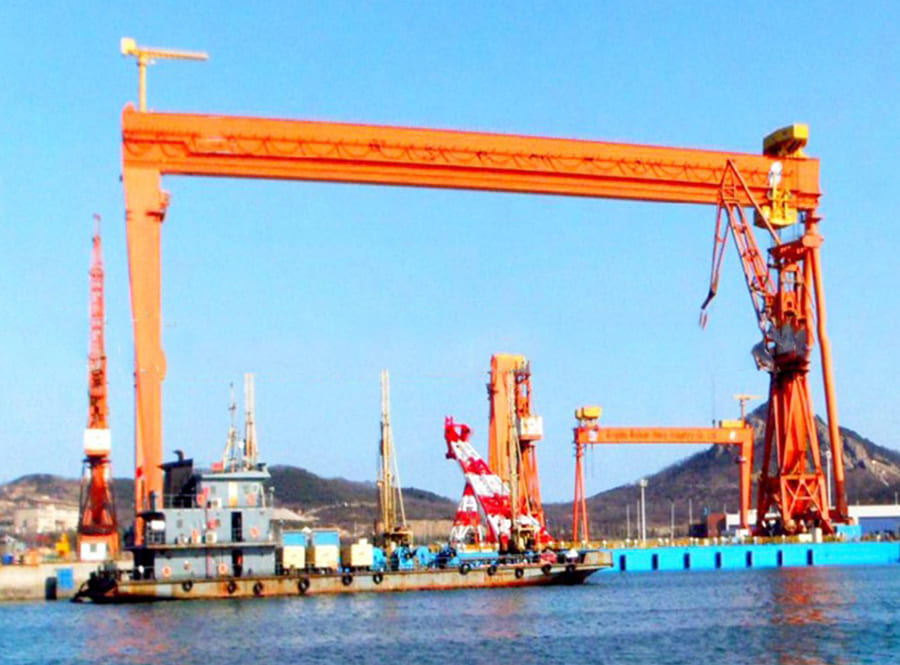
1 Hazards of car deviation
1) When the car deviates, under the action of a large horizontal lateral force (resultant force), the self-aligning bearing inside the horizontal wheel will be overloaded and damaged, and even the entire horizontal wheel will break and fall, causing serious consequences.
2) The deviation of the trolley will increase the running resistance of the trolley, increase the power consumption of the trolley motor and the load of the mechanical transmission mechanism. In severe cases, sevencrane ship building gantry crane will cause the motor to burn out and the reducer to break the shaft, which increases daily maintenance costs.
3) When the trolley deviates, the horizontal wheel and the track, and the wheel and the track, produce abnormal extrusion, which shortens the service life of the track, generates impact loads on both the girder and the trolley, and generates horizontal lateral thrust that is transmitted to the main structure, causing the Grúa pórtico para construcción de barcos industriales en venta causes shaking, and the main structure is easily deformed and the welds are cracked.
2 Reasons why the car deviates
Since the trolley is in contact with the ground through flexible tires, the reasons for its deflection are more complicated than those of conventional gantry cranes. In addition to design reasons, there are also reasons for manufacturing and use.
2.1 Razones para la fabricación
1) If the track tread inclination exceeds the tolerance, it will cause the running wheels to shift sideways, causing the car to deviate. Longitudinal: 0.3%, transverse: 0.3%
2) If the diagonal deviation of the door frame is too large when assembling the door frame, automated ship building gantry crane system will cause the car to wander. The welding stress generated during the production of the steel structure will not be released until the car is used for a period of time, and certain deformation will also occur during the stress release process.
3) The height deviation ΔH of the trolley track in the plane perpendicular to the direction of movement of the trolley should not be greater than 0.15% of the track gauge K, and the maximum should not exceed 10mm. If the height deviation on both sides of the track is too large, the car will move laterally during operation, resulting in deviation.
4) La proyección de las posiciones de las cuatro ruedas en el plano horizontal no es un rectángulo, sino un paralelogramo o trapezoide. La diferencia de colocación de las ruedas en el mismo lado de la vía es superior a 2 mm. Además, la tensión de soldadura generada durante el proceso de fabricación de la estructura de acero del carro también producirá un cierto grado de deformación durante el proceso de liberación, provocando que el carro se desvíe.
5) Cuando el bastidor del carro está en posición horizontal, las alturas de la banda de rodadura de las cuatro ruedas del carro deben estar en el mismo plano y la diferencia de altura t de las ruedas no debe ser mayor que una milésima parte del ancho de vía K.
6) Desviación de instalación de las ruedas del carro: desviación horizontal p ≤ (0,4/1000)/L, verticalidad de la rueda α ≤ (0 ~ 2,5/1 000) L. Si la desviación excede el valor especificado, la unidad de presión del área de la rueda La banda de rodadura se hará más grande, provocando un desgaste desigual en la banda de rodadura y en la vía.
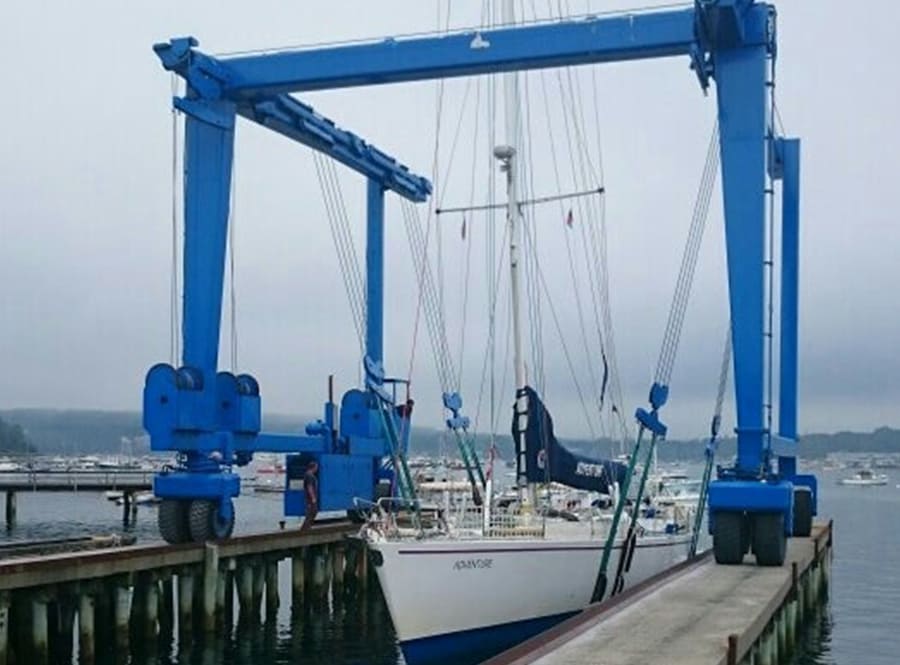
2.2 Razones de uso
1) Uneven ground in the yard, uneven tire pressure on the cart, or deformation of the trolley track will all cause the trolley to wander. After a new machine is used for a period of time, the release of stress and accumulated manufacturing errors will also cause the car to deviate. This situation generally rarely occurs again after adjustment.
2) Excessive start or stop operation will cause the wheels to spin and slip, causing the wheels to be out of sync on the tracks on both sides, causing the car to deviate.
Based on the above situation, although there are many reasons for the wheel to deviate and chew on the track, manufacturing reasons are one of the main reasons for the car to deviate.








